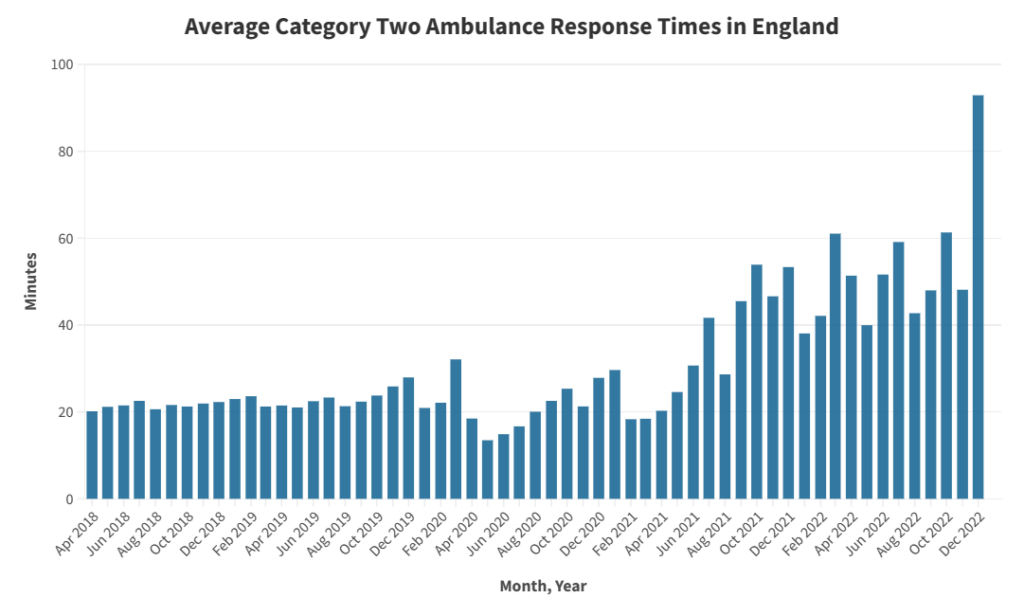Young stroke victims face a “shocking” wait of more than 90 minutes for an ambulance.
Georgia Hanson, 20, suffered a stroke in Pontefract when she was 19.
She said: “It is shocking to hear that waiting times for an ambulance for someone suffering a suspected stroke is 90 minutes – it is however, very believable.
“If an ambulance can get to someone suffering a stroke quickly and get them to hospital, then it gives them the best chance possible of making a good recovery.
“It is sad and scary to see that this simply isn’t happening anymore, and as a stroke survivor it is even more concerning.”
The average emergency response time for category two issues in England has more than tripled from just shy of 28 minutes, to more than 92 minutes, according to Nuffield Trust Data, recorded between December 2020 and December 2022.
A category two issue is classed as a serious condition, such as stroke or chest pain, which may require rapid assessment and/or urgent transport.
The NHS’s Constitution highlights that all ambulance trusts should respond to category two issues within 18 minutes, and 90% of these calls should be responded to within 40 minutes.
However, this 18-minute target has only been met three times over the last five years.

Our Freedom of Information (FOI) Request revealed the ambulance service is performing considerably better within Yorkshire, with a Category 2 response time average of 41 minutes.
But this is still more than double the NHS target and one young stroke victim had to wait more than five hours for an ambulance to arrive.
Strokes remain a crucial, life-threatening condition, and more than 90% of stroke patients in Yorkshire, under the age of 30, have been classed as category two issues in the last five years.
Juliet Bouverie OBE, Chief Executive of the Stroke Association said: “Stroke is a medical emergency and time lost is brain lost.
“This is why it’s incredibly important that you act FAST.
“It is our responsibility to know the signs and be on the lookout for stroke.”
According to the Stroke Association, 39% of people do not recognise stroke as a medical emergency.
FAST is the all-important acronym that, when followed, could save a stroke victim’s life.
Remember the signs:
Face: Is the person’s face drooping, can they smile?
Arms: Can they raise both of their arms; do they have weakness on one side?
Speech: Is their speech compromised or slurred?
Time: It’s time to call 999.
For more information on spotting the signs of a stroke, click here.




